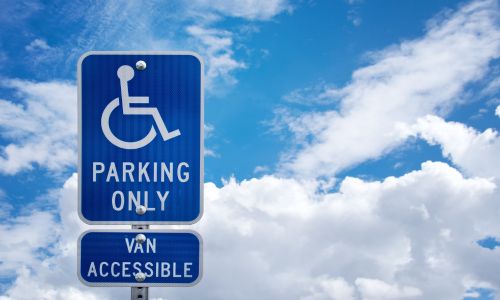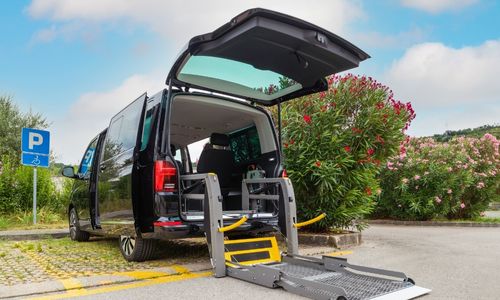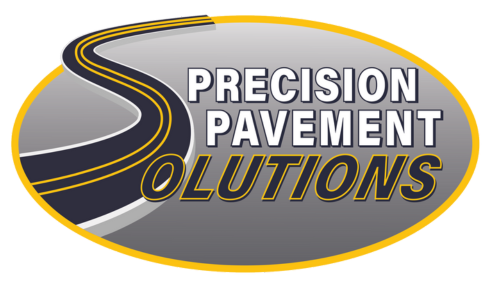Ensuring that parking areas meet ADA standards is crucial for accessibility and compliance. This guide explores the various aspects of ADA parking requirements to help property owners, businesses, and event coordinators understand and implement the necessary features. Navigating the landscape of ADA parking space requirements, including ADA parking dimensions and the required number of ADA parking spaces, is essential for creating an inclusive environment. These guidelines ensure that all individuals, regardless of mobility challenges, can easily access facilities, reflecting the core principle of ADA parking. This comprehensive overview addresses everything from ADA parking stall requirements to ADA guidelines for parking spaces, ensuring thorough knowledge and implementation of these critical accessibility standards.
Understanding ADA Parking Regulations
The Americans with Disabilities Act (ADA) sets forth guidelines that mandate parking spaces to be accessible to individuals with disabilities. These regulations are designed to provide equal access to all, removing barriers that can impede individuals with disabilities from utilizing parking facilities. Understanding these rules is fundamental for compliance and ensuring that everyone can navigate and use parking areas easily. This includes specifics such as ADA parallel parking requirements and the appropriate use of accessible parking spaces, aligning with property owners’ and managers’ legal and ethical obligations.
Key Features of ADA-Compliant Parking Spaces
Creating ADA-compliant parking spaces involves several critical features to enhance accessibility for individuals with disabilities. These features include specific ADA parking dimensions, clear and visible signage, and properly sized access aisles. Each component, from the size of the parking spaces to the placement of signage, is regulated to ensure that ADA parking space requirements are met, facilitating ease of use for all individuals, particularly those using wheelchairs or other mobility aids. In short:
Size and Space Dimensions
ADA parking dimensions are critical for compliance. Each parking space must be wide enough to accommodate vehicles of people with disabilities, including vans and larger vehicles. Typically, a standard ADA parking space is 96 inches wide.
Signage Requirements
Clear and visible signage is required to denote ADA parking spaces. These signs must be high enough to be seen over parked vehicles and indicate if the space is van-accessible.
Access Aisle Dimensions
Access aisles provide the necessary room for wheelchair transfers and must be part of any ADA-compliant parking space. The access aisle is usually at least 60 inches wide, allowing sufficient maneuvering space.
Signage Requirements
Clear and visible signage is required to denote ADA parking spaces. These signs must be high enough to be seen over parked vehicles and indicate if the space is van-accessible.
Access Aisle Dimensions
Access aisles provide the necessary room for wheelchair transfers and must be part of any ADA-compliant parking space. The access aisle is usually at least 60 inches wide, allowing sufficient maneuvering space.

Location and Distribution of Accessible Parking
Accessible parking spaces should be located nearest to the facility’s accessible entrance. If a building has multiple accessible entrances, parking spaces should be dispersed to facilitate the shortest route to an accessible entrance. Here are some key points to consider:
- Proximity to Entrances: Place accessible parking spaces close to the nearest accessible entrances. This minimizes the distance individuals with disabilities need to travel, making it easier for them to access the building.
- Multiple Entrances: If a building has multiple entrances, distribute accessible parking spaces near each entrance. This ensures that users can choose the closest and most convenient parking option based on their destination within the building.
- Path of Travel: Ensure that the path from the accessible parking spaces to the building entrance is free of obstacles, has a smooth surface, and includes curb ramps where necessary. The path should be wide enough to accommodate wheelchairs and other mobility devices.
- Weather Protection: Whenever possible, place accessible parking spaces in areas that provide some protection from the weather, such as under canopies or close to covered walkways. This adds an extra layer of convenience and safety for users.
- Slope and Leveling: Ensure that accessible parking spaces and the routes leading from them to the building entrance are level or have a minimal slope. Steep slopes can make it difficult for individuals with mobility impairments to navigate.
- Lighting and Security: Adequate lighting around accessible parking spaces and along the path to the building entrance is essential for safety, particularly during evening and nighttime hours. Consider additional security measures, such as surveillance cameras, to enhance the safety of these areas.
- Parking Decks and Garages: In multi-level parking decks or garages, ensure accessible spaces on each level or at least near elevators or ramps that provide access to all levels. Signage should indicate the location of accessible spaces.
- Reserved Spaces: Mark accessible parking spaces with the International Symbol of Accessibility (ISA). Ensure that these spaces are not used by non-disabled individuals, and consider implementing measures to enforce this, such as fines or towing policies.
- Accessible Route: The route from the accessible parking spaces to the entrance should be considered part of the accessible route and must meet ADA standards, including width, surface, and slope requirements.
- ADA Parallel Parking Requirements: Ensure that the spaces meet ADA parallel parking requirements, which include additional space for deploying wheelchair ramps and ensuring safe exit and entry to the vehicle.
Special Considerations
When planning ADA-compliant parking, special considerations must be taken into account to cater to the diverse needs of all users. This includes providing adequate van-accessible parking spaces, which require more space and often specific features to accommodate larger vehicles. Temporary events also need particular attention to ensure that ADA parking stall requirements are met and that even temporary setups do not fall short of legal expectations and accessibility standards. Moreover:
Van-Accessible Parking
Van-accessible parking spaces are crucial to ADA compliance, featuring wider access aisles and additional vertical clearance to accommodate vans.
Temporary Events
For temporary events, organizers must ensure sufficient accessible parking spaces to meet ADA requirements, even if the event is in a location that typically does not serve the public.

Compliance and Legal Implications
Adhering to ADA parking regulations is a matter of following legal requirements and avoiding the severe consequences of non-compliance. Property owners and managers must diligently implement ADA guidelines for parking spaces and conduct regular audits to ensure ongoing compliance. Failure to adhere to these standards can result in significant fines and legal actions, underscoring the importance of maintaining up-to-date knowledge and practices regarding ADA compliance in parking layouts. Additionally:
Consequences of Non-compliance with ADA Parking Requirements
Failing to meet ADA guidelines for parking spaces can lead to significant legal consequences, including fines and mandatory corrective actions. Here are some additional consequences:
- Lawsuits and Legal Fees: Businesses and property owners may face lawsuits from individuals who cannot access the facilities, leading to expensive legal fees and settlements.
- Reputational Damage: Non-compliance can result in negative publicity and harm the reputation of a business or property owner, potentially leading to a loss of customers or tenants.
- Increased Insurance Costs: Insurance premiums may increase due to non-compliance risk and potential liability claims.

Tips for Regular Audits and Updates to Stay Compliant as Laws Evolve
Regularly auditing parking areas and updating them under evolving ADA regulations is essential for compliance and avoiding penalties. Here are some tips to help you stay compliant:
- Scheduled Audits: Establish a regular schedule for thorough audits of your parking facilities.
- Stay Informed on Regulations: Keep up-to-date with ADA parking requirements and changes in guidelines.
- Detailed Checklists: Use comprehensive checklists during audits to ensure all aspects of ADA compliance are reviewed.
- Engage Professionals: Consider hiring ADA compliance professionals or consultants to conduct audits and provide expert advice on necessary updates.
- Document Changes: Keep detailed records of all your parking facility audits, changes, and updates.
- Proactive Updates: Don’t wait for issues or regulations to change. Proactively update your parking areas to meet the highest standards of accessibility.
- Technology Integration: Utilize technology, such as mobile apps or software, to track compliance, schedule audits, and manage maintenance tasks effectively.
Best Practices for Implementing ADA Parking Guidelines
Implementing best practices for ADA compliance includes planning for enough accessible spaces, ensuring proper signage and maintenance, and considering the needs of all users during the design and implementation phases. Here are some essential best practices:
- Plan Adequate Accessible Spaces: Ensure the number of ADA parking spaces required is met according to the size of your parking area. This includes both standard and van-accessible parking spaces to accommodate different needs.
- Proper Signage: Install clear and visible signage for all ADA parking spaces. Signs should be high enough to be seen over parked vehicles and indicate whether the space is van-accessible.
- Maintenance and Upkeep: Regularly maintain the condition of ADA parking spaces, including repainting lines, replacing damaged signs from professionals, and ensuring access aisles are clear of obstructions.
- Access Aisles: Ensure access aisles are correctly dimensioned and marked. These aisles are essential for providing room for wheelchair transfers and must always be free from obstructions.
- Location Considerations: Place accessible parking spaces as close as possible to the accessible entrances of buildings. If there are multiple accessible entrances, distribute parking spaces to provide the shortest route to each entrance.
- Regular Audits: Regularly audits your parking facilities to ensure compliance with ADA requirements. This includes checking ADA parallel parking requirements and adjusting spaces as necessary.
- Community Feedback: Engage with the disabled community to gather feedback on the accessibility of your parking spaces. This can provide valuable insights into areas that may need improvement.
- Training Staff: Ensure staff members are trained on ADA compliance and the importance of maintaining accessible parking spaces. They should know how to address any issues promptly and effectively.
Final Thoughts
Understanding and implementing ADA parking requirements is not just about legal compliance; it’s about ensuring accessibility for everyone. By following these guidelines, businesses and facilities can better serve their communities and ensure their parking areas are welcoming and accessible.
FAQs on ADA Parking Requirements
What Are the Goals of the ADA Accessibility?
The goals of ADA accessibility are to ensure equal access to public facilities, services, and opportunities for individuals with disabilities. The ADA aims to remove barriers, provide fair treatment, and ensure everyone uses buildings, websites, and public resources.
What Are the Four Principles of Accessibility?
The four principles of accessibility are:
Perceivable: Information must be presented in perceivable ways.
Operable: User interfaces must be operable.
Understandable: Information and operation must be understandable.
Robust: Content must be robust to work with various user agents, including assistive technologies.
How Do You Ensure ADA Compliance?
Ensure ADA compliance by understanding regulations, conducting regular audits, implementing necessary changes, training staff, and staying informed about updates. Review facilities, services, and digital content regularly to identify and address non-compliance issues.
Why Are ADA Requirements Important?
ADA requirements are important because they ensure equal rights and opportunities for individuals with disabilities, eliminate discrimination, and promote inclusivity. They help businesses avoid legal penalties and enhance their reputation by demonstrating a commitment to diversity and equality.
What Is the Difference Between ADA and Accessibility?
The ADA is a specific U.S. law setting requirements for accessibility for individuals with disabilities. Accessibility is a broader concept involving designing products, services, and environments to be usable by all people. ADA provides the legal framework, while accessibility aims to create inclusive, user-friendly experiences for everyone.

